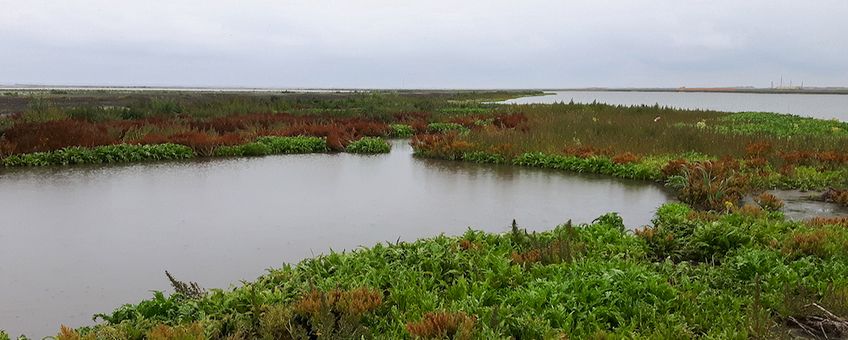
Netherlands' newest piece of nature now open to the public
Netherlands Institute of Ecology (NIOO-KNAW)The man-made archipelago is destined to become a paradise for all kinds of birds. Even though the official work on the Marker Wadden only started in 2016, the islands-in-progress already proved very popular with water birds during the last breeding season, and they are currently an excellent place to see migratory birds. But if they are to sustain this abundance, of course the islands will need to offer plenty of food to their guests.

Food web
A team of researchers from the Netherlands Institute of Ecology (NIOO-KNAW), University of Groningen and the Radboud University, together with Natuurmonumenten (the Dutch society for nature conservation), has been studying the development of the food web on the islands in a project financed by the Gieskes-Strijbis Fund. Central question: what fuels the productivity of the food web on the islands?
The team's project leader, NIOO aquatic ecologist Liesbeth Bakker, explains: "To achieve the goal of the Marker Wadden as a bird paradise, the birds should be able to find nesting and resting places, and enough to eat. It's the food that was thought to be a bottleneck for the water birds on Lake Markermeer." To sustain rich birdlife, there should be a well-developed food web, which starts with the basis: primary production of algae and aquatic plants, providing food for grazing zooplankton and macrofauna, providing food for fish and birds.
Remarkable findings
Whereas the birds are the more visible part of this food web, the basis - the underwater part of the food web with algae, zooplankton and macrofauna - is less obvious. That's why over the summer, the researchers sampled the water column and the sediment on and around the Marker Wadden. This yielded a number of remarkable findings, says Liesbeth Bakker: "During the summer, the water around the Marker Wadden was quite clear with a visibility of up to 80 centimetres deep into the water column. Since Lake Markermeer is notorious for the turbidity of its waters, this came as quite a surprise." The explanation probably lies in the high abundance of zooplankton. Zooplankton, small crustaceans such as waterfleas and rotifers, eat algae. "As such, they are mini water filters that can keep the water nice and clear. They're also a very important food source for fish."
Mosquitoes
Another interesting discovery was the mega-zooplankton in the shallow waters on the islands. "Whereas most zooplankton is so small that you would need a magnifying glass to see it well, this zooplankton was so big that you could easily spot them with the bare eye." That they could become so big is probably thanks to the absence of fish in these very shallow water layers. At that size, they make excellent snacks for wader birds such as the avocet, more than 200 pairs of which bred on the islands.
Meanwhile, in the sediment on the islands, the researchers found high densities of chironomid larvae: more than 4000 per square meter. These mosquito larvae are also perfect food for birds and fish. When the larvae eventually emerge as adult lake flies (also known as 'non-stinging midges'), they move from the sea to the land. The sheer number of them was another surprise to the researchers: there were insects flying around everywhere, and more than 90% of them were lake flies. Many insectivorous birds such as bank martins took advantage of this rich banquet.

Water & land
Considering that the mosquitoes originate in the water as larvae, the research has demonstrated that the productivity on land is largely fueled by the aquatic parts of the Marker Wadden. It's highlighted the importance of there being a mix of land and water, in order to maximize the productivity of the bird population. And of course the fact that the first island has now been opened to visitors doesn't mean the project is finished: the islands' ecosystem will continue to develop.
Text: NIOO-KNAW
Photos: Liesbeth Bakker; Wouter van Steenis
